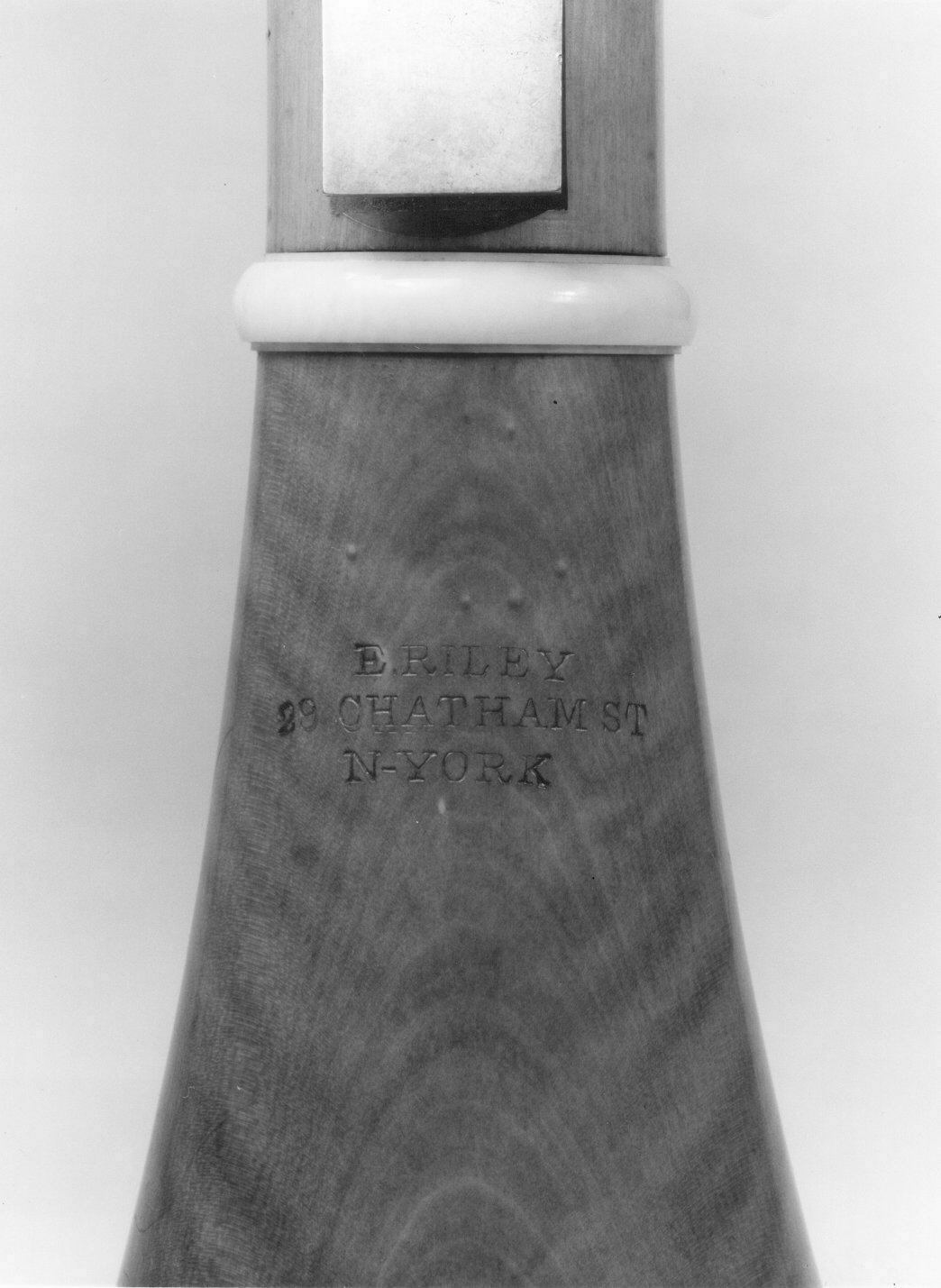Clarinet in C
Edward Riley American, born England
Not on view
The invention of the clarinet at the beginning of the eighteenth century is attributed to Johann Christoph Denner. By the 1760s, it had become part of the orchestra and during the nineteenth and twentieth centuries, this highly versatile instrument spread to nearly all forms and styles of music making including military and concert bands, jazz, klezmer and a variety of world music traditions. Before the development of fully mechanized key systems in the second half of the nineteenth century, clarinets were built in a wide range of different keys because the instrument functioned best in its home key or those closely related to it. Clarinets in different keys also have subtly different timbres or tone colors. With the advent of modern key systems, B-flat and A clarinets are the only instruments needed to play in all keys.
Because of its ability to play chromatically before brass instruments gained this capability through the adoption of the valve, the clarinet was the melodic mainstay of the early nineteenth-century band, where instruments like this example were commonly heard.
Maker notes:
Edward Riley (1768-1829) was born in England and emigrated in 1805 from London to New York. Between 1819 and 1831 his address was 29 Chattam Street (Waterhouse, NLI, 328-329).
Technical description:
Clarinet in C, five keys. Boxwood with ivory ferrules and brass keywork. Six pieces: mouthpiece, barrel, upper section, middle section for the fingers of the right hand, lower section with keys, bell. Blackwood mouthpiece grooved for cord and with English style long tenon probably original. English socket-type flask-shaped barrel. Throat keys in rudiments of turned wooden rings. Speaker liner projects almost into the middle of the bore. Levers for L4, tone-hole and key for R4 mounted in a bell-shaped swelling. Guidance for F♯3/C♯5 lever.
Fingerings:
L0: T; speaker.
L1: T; throat A♮.
L2: T.
L3: T.
L4: E3/B♮4; F♯3/C♯5.
R1: T.
R2: T.
R3: T.
R4: T; G♯3/E♭5.
Keyhead type: flat square
Keymount type: blocks, swelling
(Heike Fricke, 2014)
Due to rights restrictions, this image cannot be enlarged, viewed at full screen, or downloaded.
This artwork is meant to be viewed from right to left. Scroll left to view more.
.jpg)

.jpg)

.jpg)
